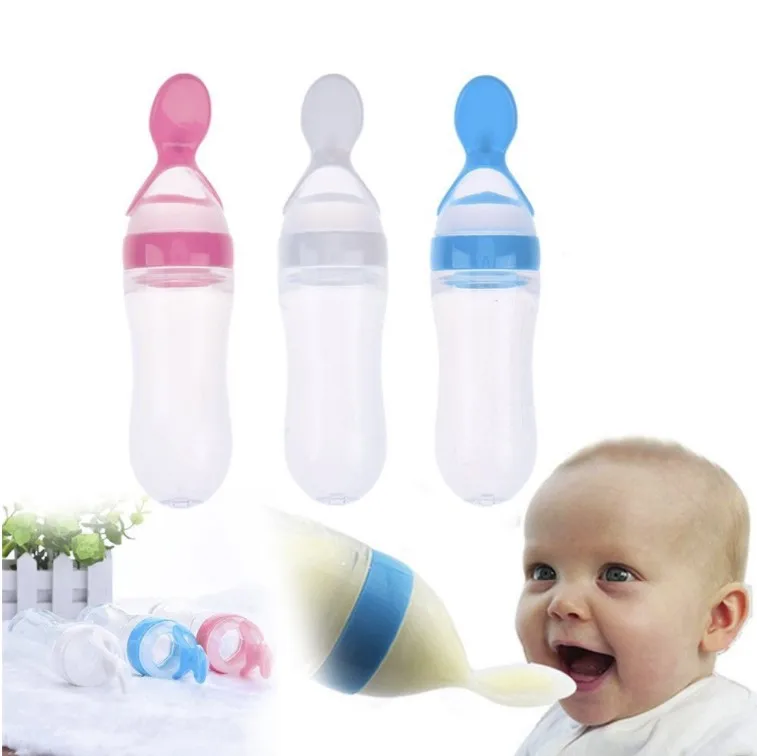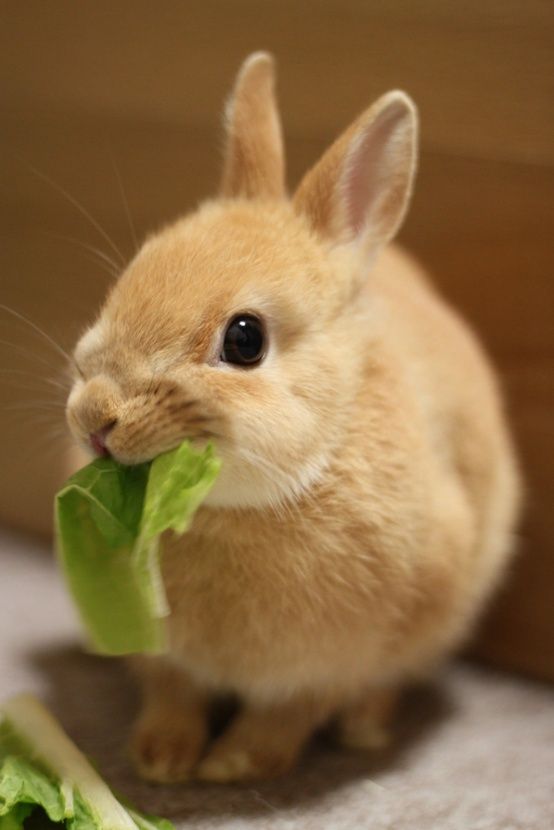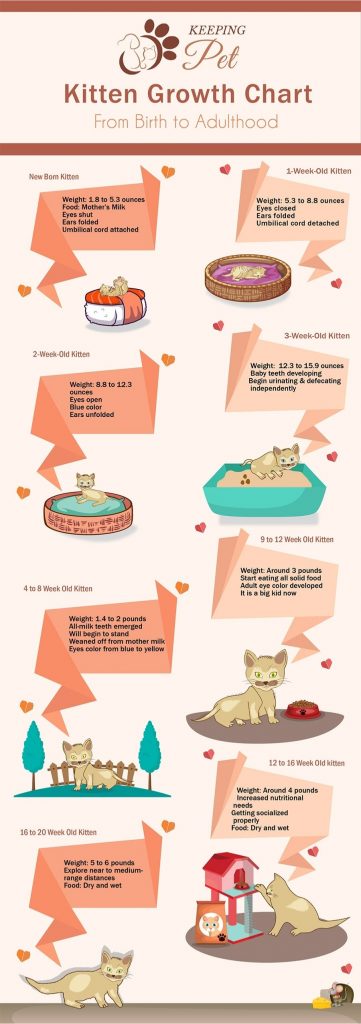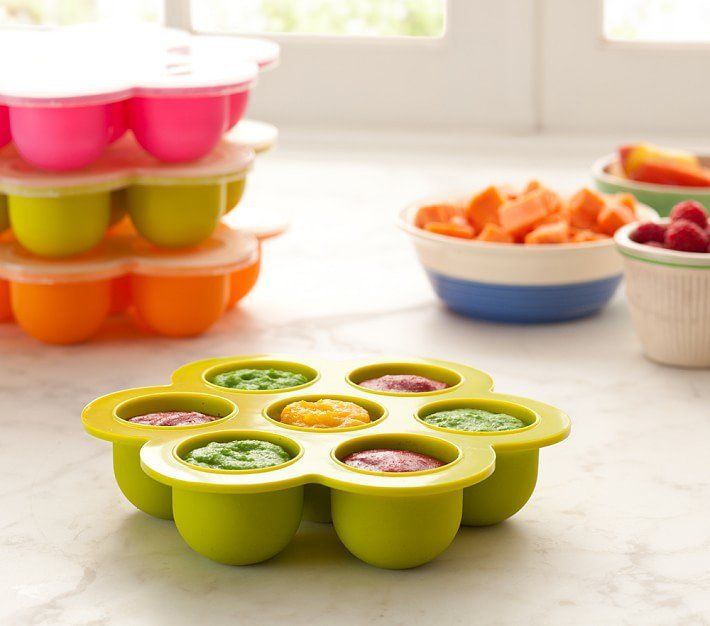Feeding baby pasta
Pasta for Babies - First Foods for Baby
When can babies eat pasta?
Pasta may be introduced as soon as a baby is ready to start solids, which is generally around 6 months of age. Take care when introducing pasta if you haven’t already introduced egg or wheat into baby’s diet yet, as pasta often contains both egg and wheat, which are common food allergens.1 2
Need ideas for the best first foods for babies? See our guides.
Background and origins of pasta
Pasta or noodles? Both terms refer to unleavened dough made of starch and liquid, formed into any number of shapes, boiled quickly, and flavored with sauce and spice. The word “pasta” comes from Italy, while the term “noodles” is used interchangeably by some to describe not only pasta, but mian, ramen, soba, udon, and other dishes made in East Asia since ancient times. So, where was this beloved comfort food invented? It’s a hot debate—but no matter the term, one fact is clear: pasta and noodles are now international staple foods. From koshari (macaroni and lentils) in Egypt, seviyan kheer (noodle pudding) in India, sopa de fideo (noodle soup) in Mexico, and the classic spaghetti Bolognese of Italy, pasta has found a place in nearly every food culture.
Is pasta healthy for babies?
Yes—with some types offering more nutrition than others. Generally pasta made from legume flour (black bean pasta, chickpea pasta, lentil pasta) is more nutrient-dense than pasta made from rice and wheat flours. Enriched pasta will also offer even more nutrients like iron and some B vitamins.3 All pasta, no matter the type, offers ample carbohydrates to energize a baby’s growing body, and when it is served as part of a well-balanced diet with plenty of whole foods, pasta can be a perfectly healthy addition to a baby’s meal.
Pasta types by key nutrients
The following is a table of common pastas and their nutritional value by key ingredients, using data from USDA’s FoodData Central unless otherwise specified, accessed February 4, 2021.
| Per ¼ cup child-sized serving | ||||||
| Legume Pasta | Carbs (g) | Fiber (g) | Protein (g) | Iron (g) | Zinc (g) | Folate (mg) |
| Black Bean Pasta | 9.3 | 2.5 | 3.0 | 0.7 | n/a | n/a |
| Chickpea Pasta | 9.3 | 2.0 | 3.0 | 0.6 | n/a | n/a |
| Lentil Pasta | 8.8 | 1.3 | 3.3 | 0.9 | n/a | n/a |
| Mung Bean Noodles (aka “glass noodles” or “cellophane noodles”) | 9.8 | 0 | 0 | 0.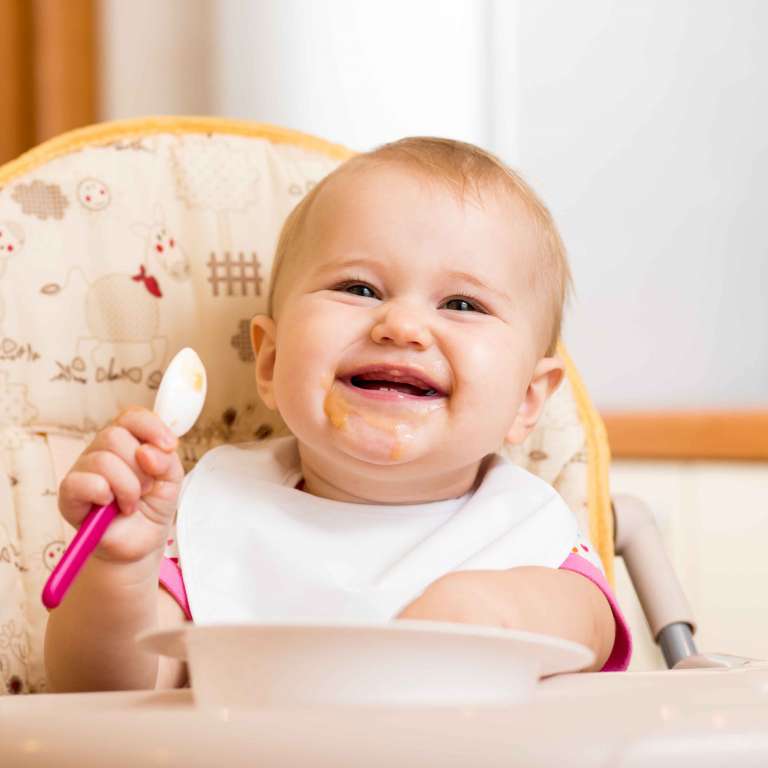 2 2 | 0.04 | 0 |
| Enriched Pasta | ||||||
| Enriched Egg Noodles | 10.1 | 0.5 | 1.8 | 0.6 | 0.3 | 33.5 |
| Enriched Wheat Pasta | 10.8 | 0.6 | 2.0 | 0.4 | 0.2 | 25.5 |
| Grain Pasta | ||||||
| 100% Buckwheat Noodles | 9.8 | 1.5 | 1.8 | 0.6 | n/a | n/a |
| 100% Whole Wheat Pasta | 10.5 | 1.4 | 2.1 | 0.6 | 0.5 | 7.4 |
| Brown Rice Noodles | 10.6 | 0.6 | 1.1 | 0.2 | 0.3 | 1.3 |
| Quinoa and Corn Pasta | 10.3 | 1.1 | 1.1 | 0.2 | 0.2 | 2.65 |
| Unenriched Wheat Pasta | 9.6 | 0.6 | 1.8 | 0.2 | 0. 2 2 | 2.2 |
| White Rice Noodles | 10.5 | 0.4 | 0.8 | 0.1 | 0.1 | 0.4 |
| Vegetable Pasta | ||||||
| Cassava Pasta | 12.3 | 1.0 | 0.2 | 0.5 | n/a | n/a |
| Sweet Potato Noodles (aka “glass” or “Korean vermicelli”) | 12.1 | 0.6 | 0.0 | 0.0 | n/a | n/a |
Is pasta a common choking hazard for babies?
No. Pasta is not a common choking hazard, though it can cause a fair amount of gagging, especially when served plain, without a sauce. To make it easier to swallow, serve pasta with a sauce, or simply drizzle a bit of oil on top and consider offering large pasta shapes if baby is just starting solids.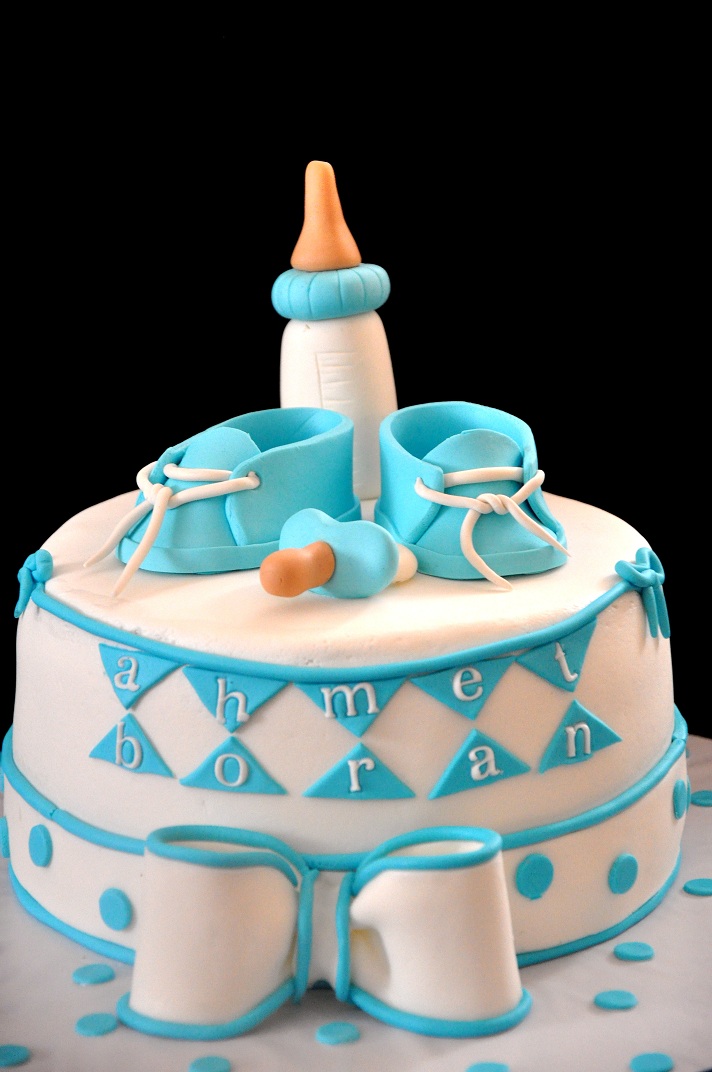
As always, make sure to create a safe eating environment, stay within an arm’s reach of baby during meals, and check out the age-appropriate serving suggestions.
For more information, visit our section on gagging and choking and familiarize yourself with common choking hazards.
Is pasta a common allergen?
Yes. Pasta and noodles often contain egg and wheat, which are common food allergens.4 5 Read the fine print on the product label before serving, and ideally, wait to serve pasta after egg and wheat have been introduced and any allergies ruled out. Have a wheat or egg allergy on your hands already? There is hope. Studies show about 80% of children outgrow egg allergy around school age, and wheat allergies are often outgrown by adolescence.6 7 8
As you would do with any new allergen, introduce pasta by serving a small quantity and watch closely. If there is no adverse reaction during the first few servings, gradually increase the amount served over future meals.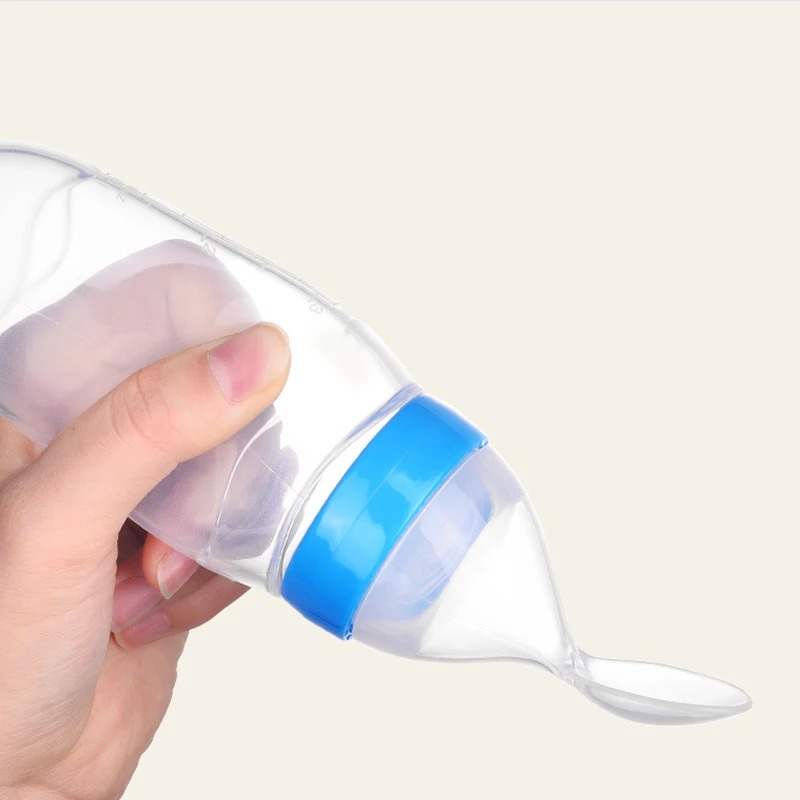
Which pasta shapes are best for babies?
Every baby develops on their own timeline, and the suggestions on how to cut or prepare particular foods are generalizations for a broad audience. Your child is an individual and may have needs or considerations beyond generally accepted practices. In determining the recommendations for size and shape of foods, we use the best available scientific information regarding gross, fine, and oral motor development to minimize choking risk. The preparation suggestions we offer are for informational purposes only and are not a substitute for child-specific, one-on-one advice from your pediatric medical or health professional or provider. It is impossible to fully eliminate all risk of a baby or child choking on any liquid, puree, or food. We advise you to follow all safety protocols we suggest to create a safe eating environment and to make educated choices for your child regarding their specific needs. Never disregard professional medical advice or delay in seeking it because of something you have read or seen here.
6 to 9 months old: Offer large pieces of flat, wide noodles or whole pieces of large tubular pasta, such as penne, rigatoni, or ziti. Pasta may be slippery and a little tough to hold on to with the immature grasp at this age. You may also chop spaghetti and other thin noodle shapes and serve in a bowl for hand scooping. Tip: Use kitchen shears to cut noodles in your child’s bowl to save time (and dishes). Anxious to introduce macaroni and cheese? Hold off until closer to 12 months of age as it is exceedingly high in sodium. And even after the first birthday, consider cutting the cheese packet in half to minimize the sodium.
9 to 12 months old: At this age babies develop the pincer grasp (where the thumb and pointer finger meet), enabling them to pick up smaller pieces of food. Cut large, tubular pastas in half, or offer macaroni, quartered ravioli, or chopped noodles. If a baby is having a hard time picking up the pasta, it’s okay to continue to serve whole pieces of large, tubular pasta.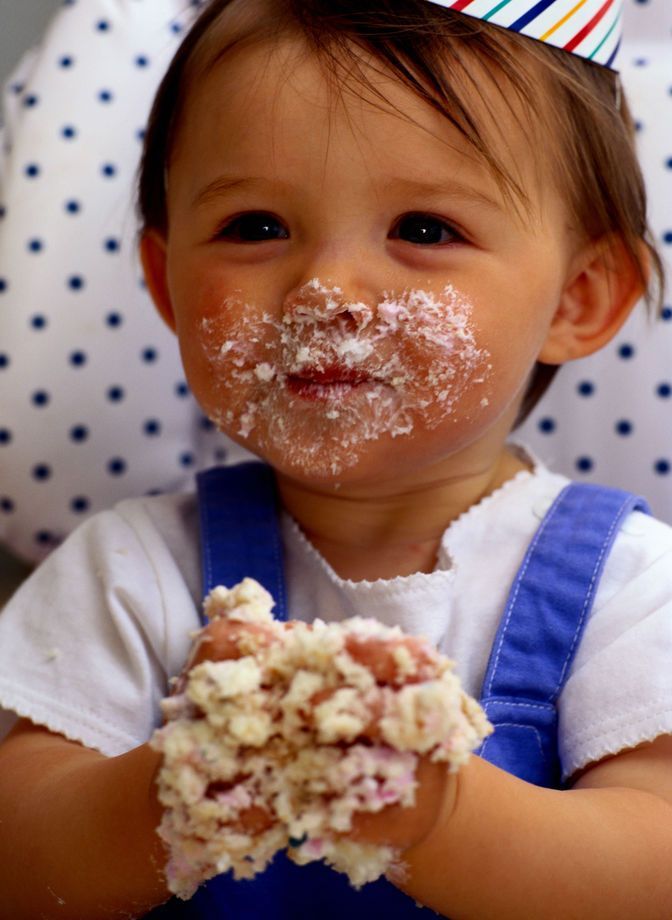 Doing so will help advance biting and chewing and grinding skills.
Doing so will help advance biting and chewing and grinding skills.
12 to 18 months old: At this age, your toddler may be more adept at working with long, thin noodles like spaghetti, ramen, and rice noodles. Explore a wide variety of noodle shapes and textures, cutting into smaller strands as needed (again, scissors work beautifully here). Don’t worry if your toddler still prefers to scoop noodles with their hands—that’s okay! Simply continue to offer a pre-loaded utensil as needed.
18 to 24 months old: Anything goes! Explore a wide variety of pasta shapes and sizes. This is a great time to let your toddler practice with trainer chopsticks or a fork, pre-loading utensils as needed.
How often should you offer solids? See our sample feeding schedules for babies of every age.
Recipe: Pasta con Aglio e Olio
(Pasta with Garlic and Oil)
Yield: 2 cups (480 milliliters)
Cook Time: 15 minutes
Age: 6 months+
Ingredients
- 2 garlic cloves
- 2 tablespoons (30 milliliters) olive oil
- 4 ounces (113 grams) rigatoni
- 8 cups (2 liters) water
- 1 tablespoon (15 milliliters) lemon juice
- pecorino cheese to taste for adults and older children (optional: only for children 12 months+)
- salt to taste for adults and older children (optional: only for children 12 months+)
Depending on the type of pasta used, this recipe may contain common allergens: egg and/or wheat. Read the ingredient list on the label, and only serve to a child after each allergen has been introduced safely.
Read the ingredient list on the label, and only serve to a child after each allergen has been introduced safely.
Directions
- Peel and smash the garlic.
- Heat the oil in a large skillet. When the oil shimmers, add the garlic and stir to coat.
- Cook, stirring occasionally, until the garlic is fragrant and golden, about 3 minutes. Turn off the heat. Discard the cloves. Keep the skillet on the stovetop.
- Bring a separate pot of water to a boil.
- Add the pasta to the boiling water, stirring to break up any noodles that stick together. If rigatoni is not your thing, use your preferred noodles or pasta to make this recipe. Just be sure to select a product with ingredients that have been safely introduced.
- Cook until soft, between 8 and 10 minutes, depending on the shape.
- Use a slotted spoon or fine-mesh sieve to transfer the pasta directly from the boiling water to the skillet. Add the lemon juice and stir to coat the pasta in the sauce.

- Scoop some pasta into baby’s bowl. Exact serving size varies. Let the child decide how much to eat.
- If you’d like to serve the pasta to adults and older children, season it with pecorino cheese and salt to taste. See our Sodium and Babies FAQ for information on when to start adding salt to a child’s foods.
- Serve the pasta as finger food and let baby self-feed. If you’d like to encourage utensil practice, pre-load an age-appropriate fork and rest it next to baby’s pasta for the child to try to pick up. Alternatively, pass the pre-loaded fork in the air for baby to grab from you.
To Store: Cooked pasta keeps in an air-tight container in the fridge for 5 days or in the freezer for 2 months.
Dinnertime fast approaching and all out of ideas? Our guide 100 Dinners for Babies & Toddlers is here to help.
Flavor Pairings
Pasta tastes mild and hearty on its own. But when served with sauces, spices, vegetables, and whole foods, noodles soak up seasonings and offer more nutrition to growing babies.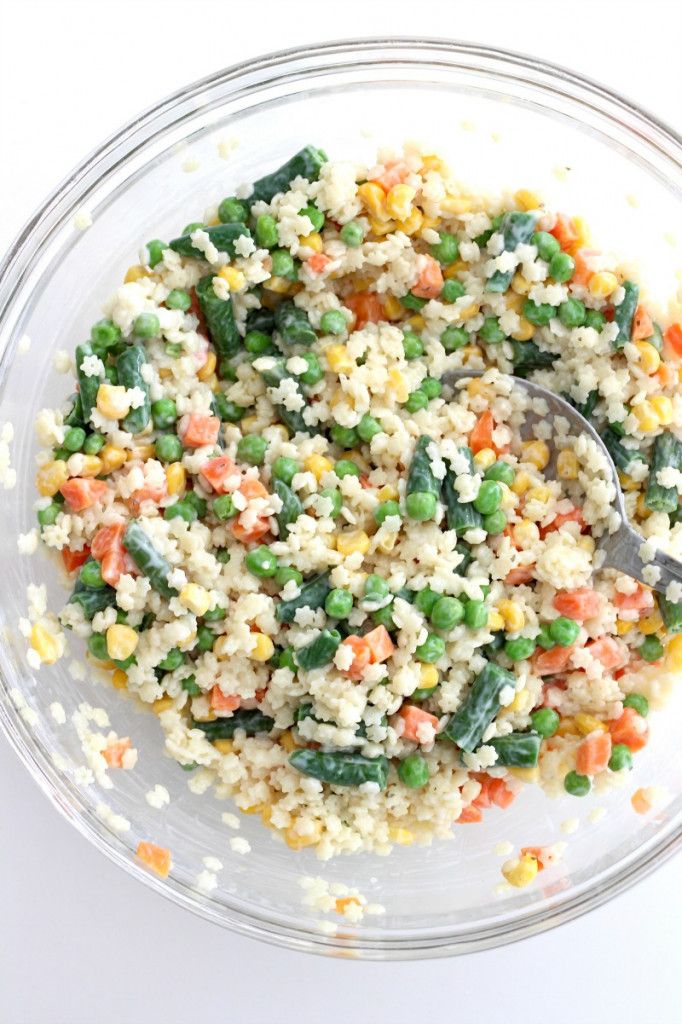 Try enhancing a classic tomato sauce with ground meat like beef, bison, or lamb and/or vegetables like bell pepper, eggplant, or zucchini. Serve pasta mixed with broccoli, cauliflower romanesco, or spinach. Add a simple creamy sauce made of goat cheese, mascarpone cheese, or ricotta cheese that has been loosened with whole milk and seasoned with a splash of lemon and a dash of ground pepper. Or use pasta as a vehicle for heart-healthy nuts by serving noodles with peanut sauce or sprinkling ground almond, pecan, hazelnut, or walnut on top of pasta dishes to add texture.
Try enhancing a classic tomato sauce with ground meat like beef, bison, or lamb and/or vegetables like bell pepper, eggplant, or zucchini. Serve pasta mixed with broccoli, cauliflower romanesco, or spinach. Add a simple creamy sauce made of goat cheese, mascarpone cheese, or ricotta cheese that has been loosened with whole milk and seasoned with a splash of lemon and a dash of ground pepper. Or use pasta as a vehicle for heart-healthy nuts by serving noodles with peanut sauce or sprinkling ground almond, pecan, hazelnut, or walnut on top of pasta dishes to add texture.
Reviewed by
J. Truppi, MSN, CNS
V. Kalami, MNSP, RD
K. Grenawitzke, OTD, OTR/L, SCFES, IBCLC, CNT
S. Bajowala, MD, FAAAAI. (allergy section)
R. Ruiz, MD Board-Certified General Pediatrician and Pediatric Gastroenterologist
- Food Allergy Research & Education. Wheat Allergy. Retrieved February 3, 2021
- Food Allergy Research & Education.
 Egg Allergy. Retrieved February 3, 2021
Egg Allergy. Retrieved February 3, 2021 - United States Food & Drug Administration. Questions and Answers on FDA’s Fortification Policy Guidance for Industry. Retrieved February 3, 2021
- Food Allergy Research & Education. Wheat Allergy. Retrieved February 3, 2021
- Food Allergy Research & Education. Egg Allergy. Retrieved February 3, 2021
- Kim J. H. (2019). Clinical and Laboratory Predictors of Egg Allergy Resolution in Children. Allergy, asthma & immunology research, 11(4), 446–449. DOI:10.4168/aair.2019.11.4.446. Retrieved February 3, 2021
- Leonard, S.A., Sampson, H.A., Sicherer, S.H., Noone, S., Moshier, E.L., Godbold, J., Nowak-Wȩgrzyn, A. (2012). Dietary baked egg accelerates resolution of egg allergy in children. The Journal of Allergy and Clinical Immunology, 130(2), 473–480.e1. DOI: 10.1016/j.jaci.2012.06.006. Retrieved February 3, 2021
- Food Allergy Research & Education. Wheat Allergy. Retrieved February 3, 2021
Iron-rich Baby Pasta - MJ and Hungryman
By Min On
This post may contain affiliate links.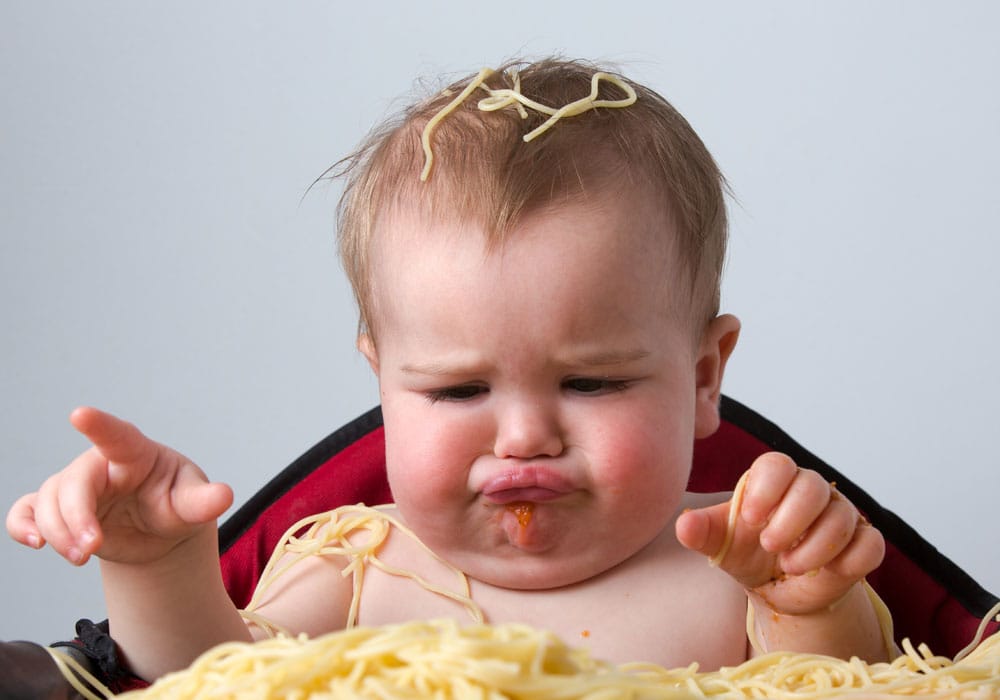 Please see our disclosure policy for more details.
Please see our disclosure policy for more details.
Share or Save It for Later!
Jump to Recipe
A baby pasta recipe that is loaded with iron and vegetables! You’ll also find answers to the most commonly asked questions regarding pasta for babies, such as when to introduce and which types are best.
Jump to:- Which type of pasta are best for babies?
- Which pasta shapes are best?
- What makes this the perfect baby pasta?
- Ingredients
- Step-by-Step Instructions
- Frequently asked questions
- More baby-friendly pasta ideas
- Iron-rich baby pasta
Which type of pasta are best for babies?
Generally speaking, all pastas are great! They are great sources of carbohydrates, which babies need to support their rapid growth and development.
Legume-based pasta (such as chickpea, lentil, edamame) have the added benefit of providing more iron, protein, and fiber compared to rice and wheat-based pasta. However, they are more expensive so rotate through.
However, they are more expensive so rotate through.
Always focus on offering as much variety of foods as possible from the start.
And just like toast and oatmeal, pasta is such a great vehicle for introducing your baby to all kinds of nutritious ingredients.
Related post: Best First Foods
Which pasta shapes are best?
It may sound counterintuitive, BUT bigger is better and safer for babies who’ve just started solids. Fusili, rigatoni, ziti, penne, egg noodles, and lasagna cut into strips are all great options.
I personally love fusili for this recipe because the sauce really clings to the grooves.
If you’re spoon-feeding or encouraging your baby to use a spoon, small pasta like orzo, mini stars, or chopped angel hair/spaghetti will work well.
Once they develop their pincer grasp (usually around 9-10 months), you can serve smaller shapes, like macaroni, orzo, orecchiette, or cut up large pasta.
What makes this the perfect baby pasta?
This simple tomato-based pasta sauce is:
- Made without salt and sugar
- Rich in iron - an extremely important nutrient for babies
- A very forgiving recipe - you don’t have to be super exact with the ingredient measurements and can swap out any vegetables you wish
- Perfect for both baby led weaning and spoon feeding approaches
- Delicious enough for the whole family to enjoy together.
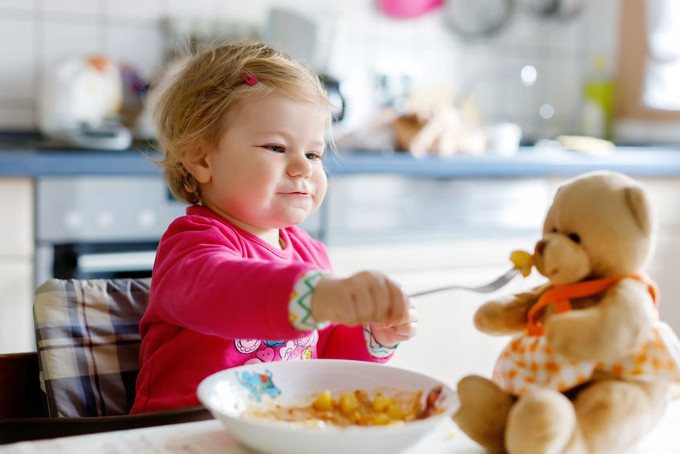 As you can see in the image above, you can set aside a portion for baby and blend while serving the sauce as is (thick and chunky) for everyone else, unless you prefer a smooth sauce.
As you can see in the image above, you can set aside a portion for baby and blend while serving the sauce as is (thick and chunky) for everyone else, unless you prefer a smooth sauce. - Thick in texture so will be easier for your baby to scoop with their hands
Related Post: Best Iron-Rich Foods for babies and toddlers
If you are looking for a tomato-free pasta sauce, try this creamy sweet potato sauce!
Ingredients
- Vegetables: you really can use whatever vegetables you have on hand! I do recommend adding some type of sweeter vegetable to help counterbalance the tartness from the tomatoes. Extra bonus if it’s rich in vitamin C to boost iron absorption
- Tomato paste: did you know that this is actually a great source of iron? Not only that, it will really help to enrich the flavor to the sauce.
- Red lentils: I love using this variety, especially if planning to blend as the color stays red. But feel free to use yellow or green lentils if desired.
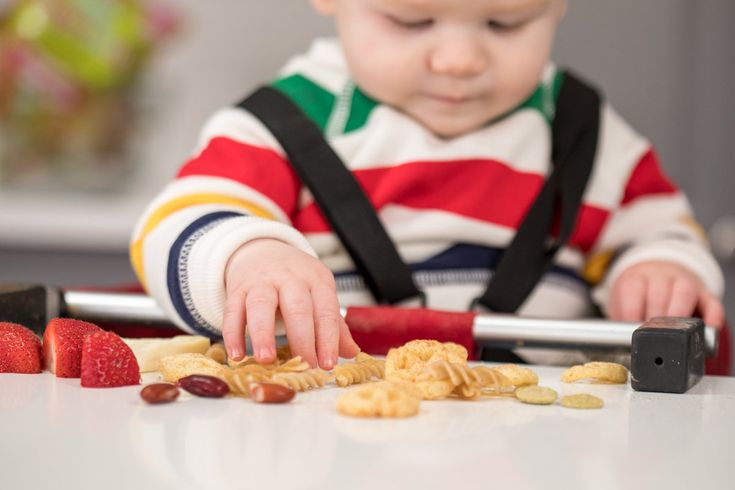
Step-by-Step Instructions
- Chop all the vegetables
- Cook onion first and then the rest of the vegetables
- Add tomato paste and Italian seasoning
- Be sure to stir well until well incorporated
- Add tomatoes, water, and lentils
- Cook for 25-30 minutes, stirring occasionally. You can enjoy as is or blend.
Frequently asked questions
When can babies have pasta?
It can be introduced as soon as your baby is developmentally ready to start solids, usually around 6 months.
If you are unsure, grab this FREE handout. You'll also receive a ton of helpful expert tips to set you on the right path
Is pasta safe for babies?
Yes, although it can cause a lot of gagging when first starting solids. Serving it with a sauce, like the one I'm sharing here, helps make pasta more manageable.
Just note that if you’re introducing pasta that contains wheat and/or egg, they are two of the top most common allergens.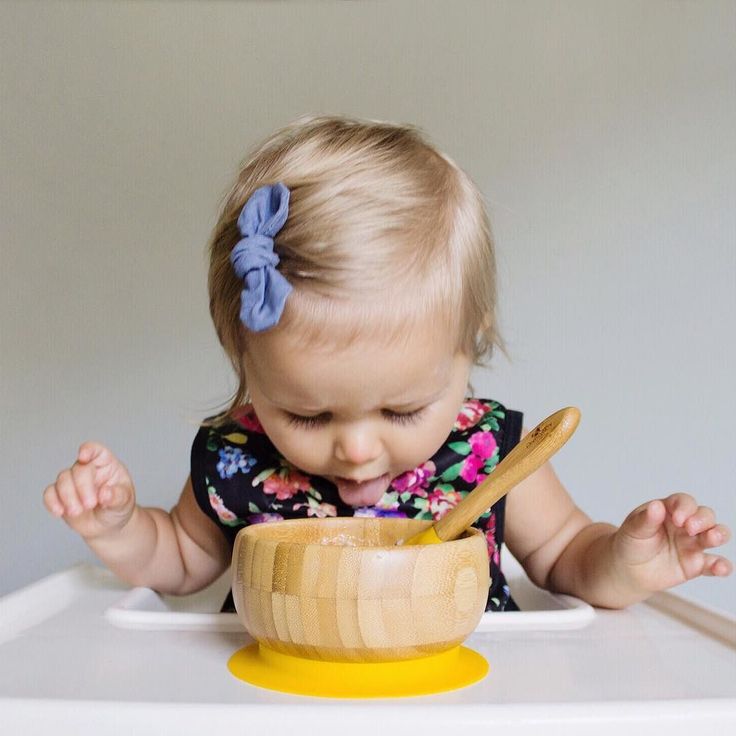 It’s recommended to introduce these early AND often, but if it’s your first time, then proceed with caution.
It’s recommended to introduce these early AND often, but if it’s your first time, then proceed with caution.
You can introduce more than one food at a time but make sure there aren’t two major allergens in the same meal. That way, if your baby does have a reaction, you’ll know exactly what was responsible.
How long to cook pasta for babies?
Cook several minutes longer than what the package instructions say so that the pasta will be soft enough for your baby to mash with their gums.
Again, there’s no need for teeth, but you do want to make sure it’s texturally-appropriate. If your family prefers pasta al dente, like mine, then simply remove portion for family once pasta reaches desired doneness and cook baby’s portion a bit longer.
Does pasta make babies constipated?
Before you start suspecting that a specific food is to blame for a lack of bowel movement, I encourage you to consider their diet as a whole.
Overall, is your baby getting enough fiber-rich foods? If you are serving refined pasta every single day, then perhaps. Here’s yet another reason why you should vary the types of pasta.
Can I blend pasta?
I would highly advise against it. Pasta contains a lot of starch and when you blend it, you’ll end up with a very unappetizing, sticky texture, that can actually become a choking hazard.
If you’ve been doing purees, I can understand your anxiety in moving forward with texture. However, it’s really essential that in minimizing texture aversion and picky eating down the road. If you feel like you’re stuck on purees, I’ve got incredible resources for you!
Can I freeze the pasta sauce?
Absolutely! I recommend freezing in single-serving portions. This tray is really great! Once frozen, you can pop the molded sauce out and transfer to a freezer-safe bag or container.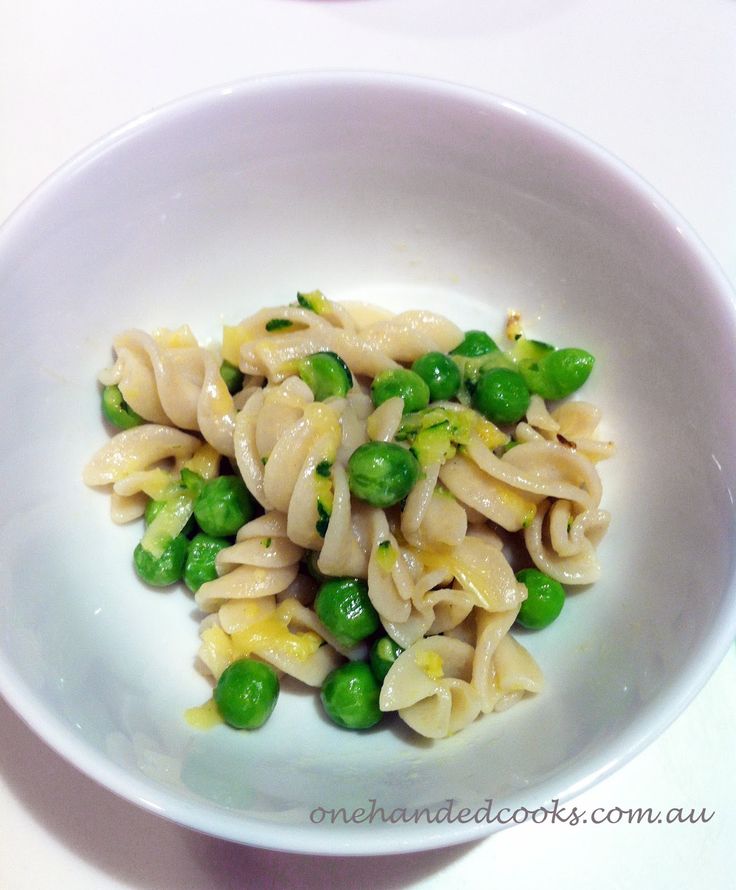
More baby-friendly pasta ideas
All of these meals were introduced to my baby during our first 3 months of starting solids. For 150+ veggie-loaded meal ideas and recipes, 80+ cooking videos, 100+ videos walking you through how to serve the meals to baby and the rest of the family, time and money-saving tips, and so much more, check out my Baby Led Feeding Journey Program.
Do you want to minimize picky eating and set a solid foundation for a lifetime of healthy eating habits?
Check out this 3 month mastering self-feeding program! It’s the closest thing to me being in your kitchen
Did you make this recipe? Leave a rating below and let me know how you liked the recipe! Your feedback means so much to me!
Iron-rich baby pasta
A baby pasta recipe that is loaded with iron and vegetables!
5 from 35 votes
Print PinPrep Time: 10 minutes
Cook Time: 40 minutes
Total Time: 50 minutes
Servings: 8
Author: Min | MJ and Hungryman
- ▢
Dutch Oven
- ▢
Blender
- ▢
Freezer Tray
- ▢ 1 tablespoon olive oil
- ▢ 1 small yellow onion, diced
- ▢ 2 teaspoons minced garlic
- ▢ 1 medium zucchini, chopped
- ▢ 1 medium carrot, chopped
- ▢ 1 medium red bell pepper, chopped
- ▢ 3 tablespoons tomato paste
- ▢ 2 teaspoons Italian seasoning
- ▢ 28 ounce can no-salt-added crushed tomatoes
- ▢ 2 cups water
- ▢ 1 cup (190g) red lentils
Heat oil in a large quart pot over medium heat.
 Add the onion and cook until translucent, about 2-3 minutes. Add the rest of the vegetables and cook for 5 minutes, stirring occasionally.
Add the onion and cook until translucent, about 2-3 minutes. Add the rest of the vegetables and cook for 5 minutes, stirring occasionally.Add tomato paste and Italian seasoning and stir until well-incorporated.
Add the tomatoes, water, and lentils, stir and bring to a boil. Reduce heat to low, cover, and cook for 25-30 minutes, stirring occasionally.
In the meanwhile, place a pot of water on the stove, bring to a boil, and cook pasta. Set aside.
Once sauce has cooled, transfer to a blender and blend until smooth. You can also keep it chunky depending on your preference.
Serving suggestions
-
For beginner eaters, puree the sauce. It will stick nicely to the pasta and be easier for baby to eat. Serve a small portion at a time as seeing too much food can be overwhelming.
-
For older babies and toddlers, skip the extra step of blending. It will be great texture exposure.

-
For older children and adults, you can season with salt and add some cheese. Small amounts are fine for babies and toddlers. You just want to watch their sodium intake.
Storage suggestions
This recipe makes a lot. I recommend freezing in food storage trays. Once frozen, pop them out and transfer to a freezer-safe bag/container. Will keep for 3 months.
Calories: 149kcal | Carbohydrates: 26g | Protein: 8g | Fat: 2g
Course Dinner
Cuisine American
Tried this Recipe? Tag me Today!Tag me @KidFriendly.Meals today!
Share or Save It for Later!
Share: [addtoany]
About Min
Thank you so much for stopping by! I am Min, a Registered Dietitian, a Christ follower, a wife, and a mom to our two miracle babies! Currently, I’m having a ton of fun feeding their tummies and sharing our baby led weaning journey! Follow me on Instagram if interested in seeing daily menu as well as tips and tricks.![]()
Reader Interactions
At what age can a child have pasta
Skip to contentPrevious Next
At what age can you give pasta to a childIn order for the child to eat well and enjoy it, you most likely try to prepare food for him that is not only healthy, tasty, but also beautiful.
Macaroni is now available in different shapes. I remember how my eldest daughter praised the soup in the garden with pasta in the form of stars.
But given the calorie content of pasta, the question arises: at what age can pasta be given to a child and how often to give it?
The benefits and harms of pasta
It is wrong to say that pasta is a very useful product. But to say that they are harmful is also not worth it. So what is the benefit?
They contain:
- Vitamins: B 1 (thiamine) - improves brain function, strengthens memory, stimulates bone tissue growth, normalizes digestion; AT 2 (riboflavin) - improves vision, strengthens the nervous system, stimulates protective functions; В 9 (folic acid) - participates in hematopoiesis, regulates carbohydrate and fat metabolism.
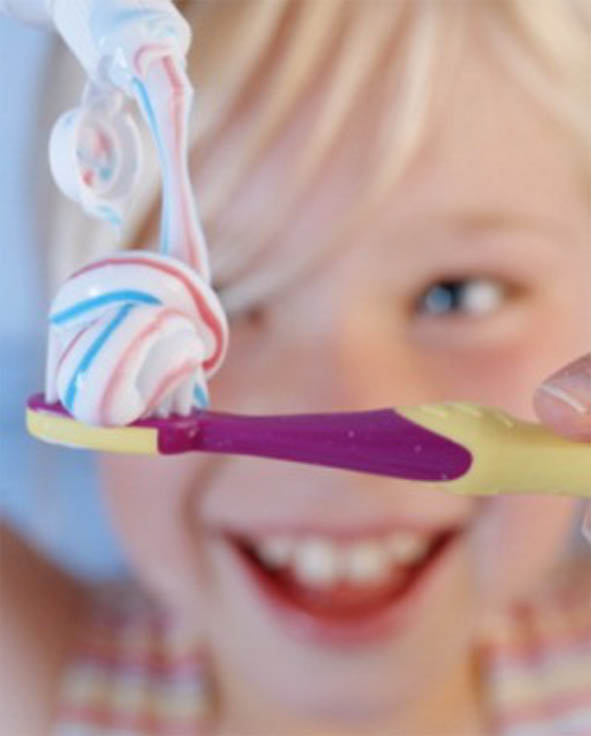
- Vitamin PP (nicotinic acid) - takes part in the synthesis of the most important hormones, normalizes digestion.
- Vitamin E (tocopherol) - strengthens the immune system, affects blood clotting, prevents anemia.
- Calcium - important for the formation of bone tissue, teeth, affects the level of glucose and insulin.
- Manganese - is involved in the production of the hormone thyroxine, normalizes the functioning of the thyroid gland, activates protective functions.
- Iron - participates in hematopoiesis, intracellular metabolism, activates growth processes.
- Magnesium - important for the formation of bones, healthy teeth, normalizes digestion.
- Phosphorus - promotes growth, normal functioning of the kidneys, activates the action of vitamins.
- Potassium - necessary for the full functioning of soft tissues, for the full functioning of the heart.
- Contains amino acids essential for the body.
- Does not contain cholesterol.

- Fiber, present in pasta, actively removes toxins, metal salts.
- Has a fixative effect on diarrhea.
Can children have pasta, because they are high-calorie foods (300-370 kcal)? The harm to the body lies in the fact that they are rich in carbohydrates. According to dietology, these substances should not exceed the norm of 60% of the total diet per day. Carbohydrates are important for replenishing energy costs. With their lack, the body begins to break down muscle protein to obtain energy. For a balanced diet, the correct ratio of BJU (proteins / fats / carbohydrates) is necessary.
It is glucose that replenishes the body's energy reserves. During digestion, carbohydrates are converted into glucose, which is controlled by insulin. When carbohydrates are increased, insulin levels rise. If the carbohydrate-insulin balance is disturbed, this leads to fullness.
Worth considering! The cause of fullness is the use of pasta with high-calorie sauces, cheese.
In case of gluten intolerance, this wheat flour product is contraindicated in children.
Based on the above, it is not recommended to include in the diet of children:
- diagnosed with overweight;
- for diabetes;
- gluten intolerance.
Given the variety of this product, it is necessary to decide which pasta is suitable for children. You can choose from different types of flour:
- wheat;
- buckwheat;
- rice.
You can make homemade noodles.
At what age to give pasta
Given the interest of babies in pasta, a logical question arises: when to introduce pasta into complementary foods.
You can start giving them from 8-9 months. Choose pasta for children under one year old from softer varieties of wheat, cook them longer so that the child can easily chew them. Read a useful article How to teach a child to chew>>>
From how many months can a child eat pasta from a common table? With pedagogical complementary foods, you can also give your own pasta, which the whole family eats, just give them in microdoses - small pieces the size of rice. This will allow the baby to get acquainted with the new product, and the gastrointestinal tract to get used to the digestion of such a product.
This will allow the baby to get acquainted with the new product, and the gastrointestinal tract to get used to the digestion of such a product.
How to properly introduce pasta into a child's diet
When choosing between cereals and flour products, preference should be given to cereals. Having found out at what age a child can have pasta, it is necessary to decide: how to properly introduce them into the diet.
Like any new product, pasta is introduced in accordance with the general rules:
- The first time, several microdoses of the product are given.
- Feeding time - the first half of the day.
- No new foods in baby's diet for 1-3 days.
- During this time, observe the reaction of the infant. If it did not follow, the next portion can be increased.
- If a negative effect on the body is detected (rash, interruptions in the work of digestion), the use of a new product is postponed. The next test is recommended in a week.
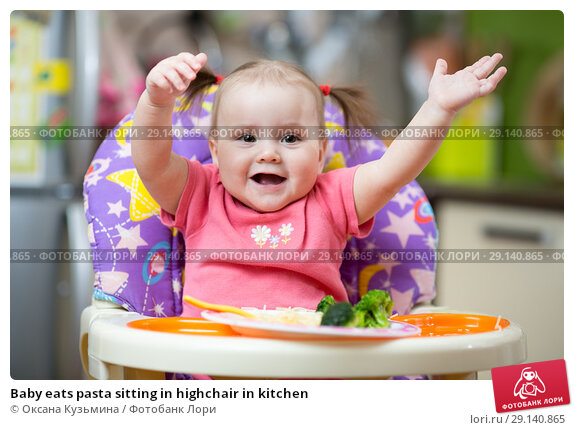
For more information about the introduction of complementary foods, the sequence and quantity of foods in the baby's diet, see the online course The ABC of complementary foods: safe introduction of complementary foods to babies>>>
Why kids love pasta
There is pasta for kids. Manufacturers, wanting to diversify their products, produce them in various types and colors. Products of green, red and yellow color are obtained by adding natural coloring components: spinach, beetroot and carrot juice.
Children love this product very much in the form of various figures: vehicles, letters, stars, animals, shells, etc. They are good to use in soups, the child is happy to catch interesting figures in it.
How to cook pasta
Children up to two years of age are recommended to include in the diet as a separate dish, without meat products. Refueled with butter or vegetable oil.
How to properly cook pasta to make it soft and elastic.
- After the water boils, add salt.
- Drop pasta and stir to prevent sticking.
- Taste according to the recommended cooking time on the package to determine doneness.
- Drain in a colander.
- After the water has completely drained, return them to the pan and fill with oil (more about oil in complementary foods>>>).
What if the child only eats pasta? You need to show ingenuity and ingenuity. Pasta dish can be varied so that it will also be useful:
- Mix them with cheese, cottage cheese. Can be made into a casserole.
- Cook with milk.
Important ! You need to make sure that the baby is not allergic to cow's milk lactose.
- Complete the dish with vegetable ingredients: carrots, tomatoes, peas. It will turn out bright and tempting. Vegetables are not fried, but stewed.
- Children after 2 years of age do an excellent job with the addition of meat components.
 Meat is recommended to use boiled, not fatty varieties. More about meat in complementary foods>>>
Meat is recommended to use boiled, not fatty varieties. More about meat in complementary foods>>>
If you are tired of coming up with new tricks to make your child eat all the food, then it's time to improve his nutrition. Take the online course We eat with pleasure: we return the appetite of the child>>>
Given the attractive appearance, children are very fond of pasta. But it is worth remembering that they are included in the nutrition of the baby no more than 2-3 times a week, while diversifying the dish, you will provide the baby with not only interesting food, but also healthy.
See also:
- The child does not eat complementary foods
- Complementary potatoes
- Complementary foods for babies by months
Author: Lyudmila Sharova
Subscribe and receive a recording of the seminar about five main feeding errors .
Enter your email and click on the "GET" button
*- By clicking on the button, I agree to the processing of personal data and receiving the newsletter.
Learn about complementary foods:
Search result:
Take the test
What kind of mother are you?
Take the test and find out your mothering character
Headings
Pregnancy
- Pregnancy planning
- Signs of pregnancy
- Nutrition during pregnancy
- Calendar
- Pregnancy health
- Pain during pregnancy
- Allotments
- Treatment and examination
- Medicines
- Lifestyle
- Childbirth
Breastfeeding
- Start GV
- GW problems
- Little milk
- Nursing mother's food
- Nursing mother's health
- Medicines for breastfeeding
- Chest pain
- Cessation of lactation
Baby up to a year
- Child development
- Baby's dream
- Introduction of complementary foods
- Infant health
- Eruptions
- Colic
- Baby chair
- Teeth
- Runny nose
- Jaundice
- Medicines for infants
- Baby clothes
- Childcare
- Bathing a newborn
- Hygiene
- Security
Child over one year old
- Child's sleep
- Child rearing
- Age crises
- Kindergarten
- Outdoor
- Baby food
- Potty training
- Child's fears
Tests
- Tests for mothers
since how many months, reviews of moms
Complain
Updated
Contents:
What are the benefits of pasta9 for children
When can you start giving pasta to children
0003
Rules for introducing the product into complementary foods for children under one year old
How can you cook pasta for a baby
From how many months pasta is used as an addition to the main course
Recipes for cooking
Video
At what age you can give pasta to a child depends factors, but do not experiment until the baby is 10 months old.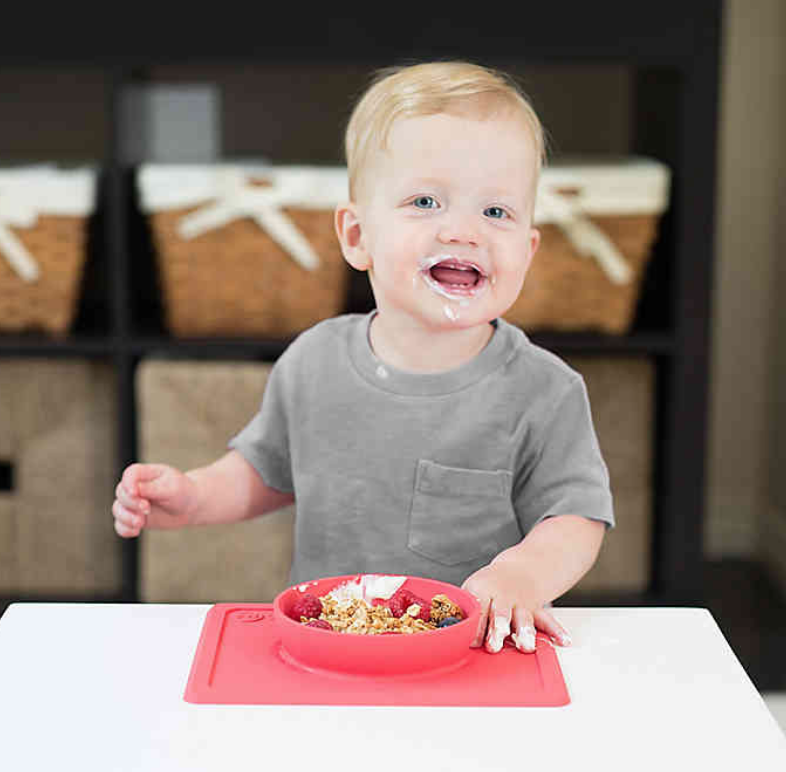 This product contains many useful vitamins and minerals that are necessary for full development. However, it is still impossible to introduce it ahead of time due to the unformed digestive system.
This product contains many useful vitamins and minerals that are necessary for full development. However, it is still impossible to introduce it ahead of time due to the unformed digestive system.
What are the benefits of pasta for children
The product is made from different varieties of wheat, buckwheat and millet, therefore it contains a lot of fiber, which actively removes salts and various toxins from the body.
Pasta can be given to a child from 8-9 months of ageIngredients of pasta:
- Vitamin B1 - thiamine. Helps in the formation of bone tissue, stimulates the brain, restores digestive functions.
- B2 - riboflavin. The component helps with visual disorders, helps strengthen the nervous system.
- B9 - folic acid. Participates in metabolic processes, restores hematopoietic processes.
- Vitamin PP. Promotes the synthesis of hormones in the body, restores digestive functions.
- Tocopherol - vitamin E.
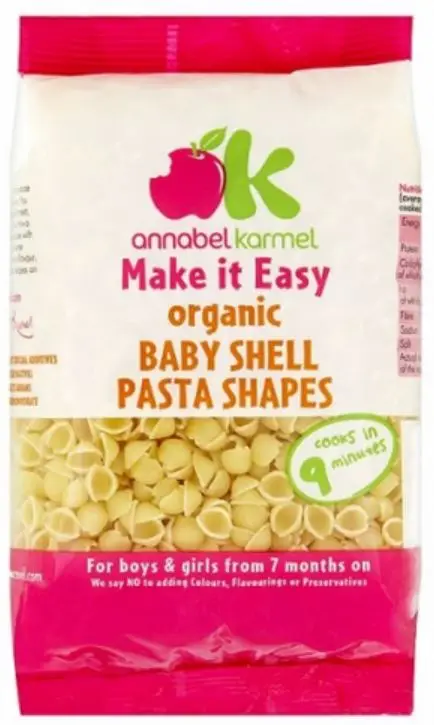 Helps prevent the development of anemia, has an antioxidant effect and helps to increase and strengthen the immune system.
Helps prevent the development of anemia, has an antioxidant effect and helps to increase and strengthen the immune system. - Potassium. Good for the cardiovascular system.
- Calcium. Participates in the development and strengthening of human bone tissue, teeth.
- Phosphorus. Enhances growth, restores kidney function.
- Magnesium. Promotes the development of bone tissue, helps in digestion.
- Manganese. It has a positive effect on the thyroid gland, regulates the work of thyroxine.
- Iron. Participates in metabolic processes, promotes growth.
The product also contains various amino acids that are essential for the full development of the child. There is no cholesterol in pasta.
The disadvantage of the product is the high content of carbohydrates. There are about 300-350 calories per 100 g of pasta. Therefore, the product is prohibited for children suffering from overweight, with gluten intolerance and diabetes.![]()
According to studies, the content of carbohydrates in pasta exceeds the prescribed daily allowance by 60%.
If the baby does not show high activity and does not like to spend time playing outdoor games, it is recommended to limit the use of pasta, as the child may begin to gain weight due to the high content of carbohydrates.
Carbohydrates are necessary for those children who spend a lot of energy per day and in order to replenish the supply of spent energy, it is necessary to eat right, maintaining a balance between proteins, fats and carbohydrates.
When can you start giving pasta to children
Pasta is introduced into complementary foods starting from 8-9 months. In this case, it is necessary to purchase special children's options. The product should be thoroughly boiled so that the child can easily digest new food for him.
In department stores, in special departments, you can buy pasta that is intended for children of different ages.

Special children's pasta or vermicelli are most suitable. However, the product should not be given as a main course. It is recommended to add them to various soups and vegetable purees.
Children over 1 year old are given vermicelli as a side dish to the main course no more than 2-3 times a week. At the same time, the addition of various sauces, mayonnaises should be limited or completely excluded.
Rules for introducing the product into complementary foods for children under one year old
There are several basic rules that will help you to correctly introduce a new product into your child's diet.
Recommendations:
- For the first time, pasta is given to the child in a small portion in the morning.
- Do not try several new products at the same time.
- If after the first dose the baby does not have a negative reaction (disordered stool, rash on the skin), then the next time you can give a portion a little more.

If a child does experience side effects from a new product, it is recommended to postpone complementary foods and repeat them no earlier than 7 days later.
How to cook pasta for a baby
Boil pasta according to instructions. After the water boils, add salt and lower the pasta into the pan. Then everything is thoroughly mixed, making sure that they do not stick together. Drain through a colander, then again transfer to a saucepan and add the required amount of butter.
Since how many months pasta has been used as an addition to the main course
When you can introduce pasta into complementary foods depends on the condition of the child's gastrointestinal tract and gluten toleranceIf the child refuses to eat noodles, it is allowed to supplement it with other products or prepare some other dish. A suitable ingredient is cheese or milk. You can also cook a casserole or complement the dish with stewed vegetables.
Cooking recipes
Recipe 1
To prepare naval pasta, you need 0. 2 kg of soft pasta, the same amount of lean meat, 1 small carrot, half an onion and a little salt.
2 kg of soft pasta, the same amount of lean meat, 1 small carrot, half an onion and a little salt.
The meat is pre-boiled, scrolled in a meat grinder, and then stewed over low heat. In the process of cooking, add chopped or grated onion and carrots on a medium grater. At the end add some oil. Vermicelli is boiled separately. After cooking, everything is thoroughly mixed and served to the table.
Recipe 2
To prepare the dish you will need:
- 40-50 g of soft wheat pasta;
- a little sugar syrup - 1-2 teaspoons;
- breadcrumbs - 1 teaspoon;
- table salt - 1 teaspoon;
- small piece of butter;
- 1 green apple.
The fruit is pierced in several places and baked in the oven, then ground on a fine grater and mixed with sugar syrup. The mixture is put on a slow fire and brought to a boil. Vermicelli is boiled separately. Then grease a baking sheet with butter and lightly sprinkle with breadcrumbs.